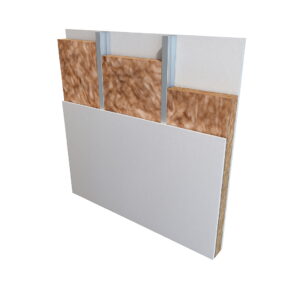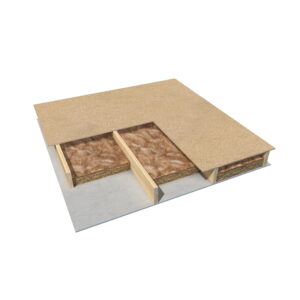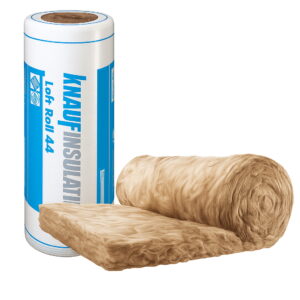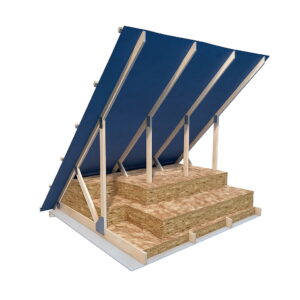Knauf Insulation Roll
Knauf Insulation, a well-known manufacturer of insulation, makes Knauf Insulation Roll, a particular kind of thermal and acoustic insulation product. Glass or mineral wool, both of which are recognised for having great insulating characteristics. The common option for improving the energy efficiency of household and commercial buildings, this insulation wrap is made to be simple to handle and install.
Knauf Acoustic Earthwool Insulation Roll
A high-performance, environmentally friendly insulation material, Knauf Acoustic Earthwool Insulation Roll is made to efficiently lessen sound transmission and improve thermal comfort in buildings.
Knauf Earthwool Loft Insulation Roll
Designed to effectively increase thermal insulation in residential and business loft areas, Knauf Loft Earthwool Insulation Roll is a high-end, ecologically friendly insulation solution.
Main Characteristics of Knauf Insulation Roll
Knauf produces a type of insulation known as Knauf Insulation Roll, which is highly regarded for its unique qualities that make it a popular choice for insulation in various construction applications;
- Effective thermal insulation: Knauf Insulation Roll does a job of minimising heat transfer. It helps keep temperatures reducing the need for excessive heating or cooling and ultimately leading to lower energy costs.
- Insulation performance: This insulation roll has an R value meaning it can resist the flow of heat. Knauf Insulation Roll typically offers R values for energy efficiency.
- Installation: Installing Knauf Insulation Roll is straightforward as it is designed to be user-friendly and easy to work with. It can be easily trimmed to fit areas such as floor joists, attics and walls.
- Fire Resistance: Many of the Knauf Insulation Roll options are designed to withstand fire providing an added layer of safety in case of a fire incident by helping to contain the flames.
- Acoustic performance: Depending on the product, from the Knauf Insulation Roll range it can also offer soundproofing qualities assisting in reducing noise transmission within a building.
- Environmental Considerations: Knauf Insulation places an emphasis on sustainability. Many of their products are crafted using recycled materials. This supports eco-construction practices. It may even make them eligible for various environmental certifications. The versatility of the Knauf insulation roll allows it to be used in applications such as insulating walls, roofs, floors and other areas making it suitable for both commercial projects.
- Durability: It is engineered to withstand long-term exposure to weather conditions without performance degradation ensuring that the insulation remains effective over time.
All these characteristics make Knauf Insulation Roll a choice for enhancing comfort and energy efficiency in buildings while also considering safety and environmental impact. However, please note that specific features may vary depending on the product within the Knauf Insulation Roll line. Therefore it’s important to choose the option based on your insulation needs.
Additionally, market conditions and supply and demand can influence prices.
How to cut Knauf Insulation rolls?
Combi-cut products are designed to provide flexibility in installation. These items can be used either as perforated rolls or uncut as full-width rolls, allowing for increased efficiency on-site. For easy installation, uncut items can be installed as they are in full-width rolls or trimmed to fit between joists.
The choice between ready-cut and uncut rolls depends on factors such as desired insulation thickness (measured in R values), local climate conditions and energy efficiency goals.
It is crucial to consider the size and covering area of the insulation rolls as well as the total area that has to be insulated when determining the number of rolls needed for a project.
How many rolls of loft insulation do I need?
Below is a step-by-step guide.
- Calculate the Insulated Area: You should take measurements of the width and length of the space you intend to insulate.
- Calculate the Total Area in m2: Multiply the length by the width to calculate the total square footage of the area. For example, if your attic measures 10 metres by 12 metres, the whole area would be 10 x 12 = 120m2
- Coverage Area per Roll: Please refer to the product specifications and manufacturer data sheets for guidance on the covering area per roll.
- Calculate the Number of Rolls: Divide the total area to be insulated by the coverage area per roll. This will give you the number of rolls needed. Total Area / Coverage Area per Roll =Number of Rolls. For example, if each roll of insulation covers 12.12m2, and you have a total area of 120 m2 to insulate: Number of Rolls = 120m2 / 12.12m2 per roll = 9.90 rolls round up to the nearest whole number when purchasing insulation rolls. Ten rolls are needed in total.
- Wastage and Extra Insulation: It’s advisable to plan for some waste and any additional insulation that could be required to provide complete covering and take into consideration any abnormalities in your area. Consider adding one or two more rolls to be cautious, depending on how complicated your project is.
Conclusion
By efficiently insulating walls, roofs, and floors using Knauf insulation rolls it will help to prevent heat loss, increase interior comfort, and reduce energy consumption. Our dedicated sales team is here to assist you, answer your questions, and provide tailored solutions that perfectly align with your requirements. Contact us at 0203 3187316 or by email at [email protected] so we can assist you with your purchase.
Showing all 7 results
-
100mm Knauf Acoustic Insulation Roll – Glass Mineral Wool 12.36m2
100mm Acoustic Insulation Roll from Knauf is a Glass Mineral Wool roll, designed for use in internal wall and floor applications, to offer sound absorption and noise reduction properties.
£49.44£59.33 Ex VATInc VAT£4.00£4.80 Per m2 Add to cart -
100mm Knauf Insulation Loft Roll 44 Combi-Cut 13.89m2 Roll
Knauf Insulation Loft Roll 44 is a non-combustible glass mineral wool roll supplied in a Combi-Cut format. It is designed for use in cold lofts. Manufactured using Knauf Insulation’s unique bio-based binder, ECOSE® Technology.
£28.50£34.20 Ex VATInc VAT£2.05£2.46 Per m2 Add to cart -
150mm Knauf Insulation Loft Roll 44 Combi-Cut 9.18m2 Roll
Knauf Insulation Loft Roll 44 is a non-combustible glass mineral wool roll supplied in a Combi-Cut format. It is designed for use in cold lofts. Manufactured using Knauf Insulation’s unique bio-based binder, ECOSE® Technology.
£28.41£34.09 Ex VATInc VAT£3.09£3.71 Per m2 Add to cart -
200mm Knauf Insulation Loft Roll 44 Combi-Cut 6.84m2 Roll
Knauf Insulation Loft Roll 44 is a non-combustible glass mineral wool roll supplied in a Combi-Cut format. It is designed for use in cold lofts. Manufactured using Knauf Insulation’s unique bio-based binder, ECOSE® Technology.
£28.50£34.20 Ex VATInc VAT£4.17£5.00 Per m2 Add to cart -
25mm Knauf Acoustic Insulation Roll – Glass Mineral Wool 26.64m2
25mm Acoustic Insulation Roll from Knauf is a Glass Mineral Wool roll, designed for use in internal wall and floor applications, to offer sound absorption and noise reduction properties.
£39.69£47.63 Ex VATInc VAT£1.49£1.79 Per m2 Add to cart -
50mm Knauf Acoustic Insulation Roll – Glass Mineral Wool 16.2m2
50mm Acoustic Insulation Roll from Knauf is a Glass Mineral Wool roll, designed for use in internal wall and floor applications, to offer sound absorption and noise reduction properties.
£37.68£45.22 Ex VATInc VAT£2.33£2.80 Per m2 Add to cart -
75mm Knauf Acoustic Insulation Roll – Glass Mineral Wool 17.4m2
75mm Acoustic Insulation Roll from Knauf is a Glass Mineral Wool roll, designed for use in internal wall and floor applications, to offer sound absorption and noise reduction properties.
£55.00£66.00 Ex VATInc VAT£3.16£3.79 Per m2 Add to cart






